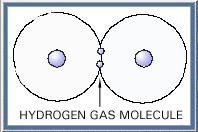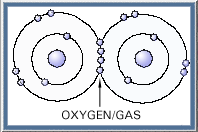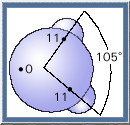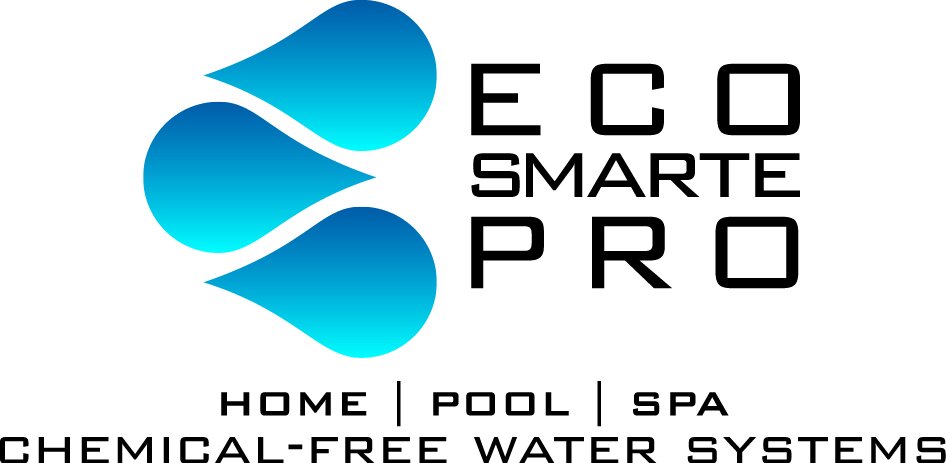Keep reading
….
Surface Tension Lowered - "Wetter Water":
ECOsmarte™ has been confirming lower surface tension of the treated water on sites in numerous applications since 1996. Surface tension is measured in DYNES with the use of a tensiometer. Untreated water will typically have a surface tension of 72 dynes. The use of wetting agents and surfactants can lower this to between 50 dynes and 60 dynes. Adding ECOsmarte® cells to the install, as well as recirculating tanks can achieve similar results. Less water, less pumping energy use have
Soil Moisture Levels Rise:
On both residential and commercial sites, ECOsmarte® has demonstrated significant water savings as the lower surface tension of the water increases the soil moisture (within six weeks) when measured levels against the soil moisture levels outside of the irrigation zone or on untreated irrigation zone water. "Wetter water" also develops a more random splash pattern which slows mineral build-ups in the soil. (The water droplets are less spherical as surface tension lowers) Higher soil moisture levels yield better results with less water used.
Point-of-Entry: (11GPM-90GPM)
In both residential and commercial applications between .1 ppm and .5ppm trace ionization is placed constantly in the water flow. Most water pipe size applications have been addressed with 3/4 inch, 1 inch, and 1 1/4 inch, 1 1/2 inch, and 2 inch being the most popular. When used with ECOsmarte® electronic oxidation, calcium is kept in the soft bicarbonate form in standing pressure lines, and at fixtures. The heat point required to precipitate calcium in the carbonate form is increased substantially. ECOsmarte® has a specific successful history to 26 grains of hardness, (442 ppm) with a TDS level as high as 3000. No pH histories above 8.4 have been tested. PH levels of 5.2 to 8.3 are therefore required. ECOsmarte® manufactures low and high TDS water models for Point-of-Entry equipment, recognizing that the conductivity of the water completes the ECOsmarte circuit.
Spas and Swimming Pools: (30-340GPM)
ECOsmarte® uses ionization in trace residual amounts for spa and swimming pool applications. Cupric ions (Cu²+) are kept at .4 to .7 ppm residual requiring ionization for a maximum of 15 minutes per week on a 600-gallon spa and 4 hours per week on a 24,000-gallon swimming pool. No constant introduction of copper occurs and the residual sanitizer in the pool is recognized by the National Sanitation Foundation (NSF) and the U.S. Environmental Protection Agency. The ECOsmarte® 30VA control box offers a choice of oxidation, ionization, or on/off all swimming pool or spa equipment. Fully programmable models are available.
Commercial and Industrial: (11GPM-1200GPM) 1.0 MILLION GPD
Sophisticated copper ionization only systems are available for all industrial and agricultural applications. Specifically but not limited to heating and cooling systems, food and beverage systems, dispensing wastewater treatment, agricultural drip irrigation, overhead spray systems, vapor mist, and chemical spray applications for herbicides and pesticides. Ionization lowers the surface tension of the water, yielding less chemical usage. Calcium is managed in bicarbonate form CA2H (CO3) to 155°F under methods testing approved by ETL/EPA Labs and developed by ECOsmarte® in 1995. The alkalinity of the water is also primarily bicarbonate, reducing corrosion tendencies. These principles are consistent with Langlier’s theory, though not widely known in the water industry. Many Canadian and European water analyses are now measuring bicarbonate alkalinity and bicarbonate calcium to dissuade the use of environmentally unfriendly salt softening.
ECOsmarte® provides the benefits, without the environmental health costs associated with chemicals.
ECOsmarte® Anodyne Oxygen Process, and Ozone are among the few known disinfectants that have the Oxidation potential to be effective against the waterborne pathogen, cryptosporidium depending on part per million levels. The main advantage of the ECOsmarte® process and ozone is, they do not create health-threatening by-products such as Dioxins, Trihalomethanes (THMs), and haloactic acids that are created by Chlorination. In 2010 the ECOsmarte Point-of-Entry was certified to NSF53, the removal of trihalomethanes by the WQA. Testing for the chemically sensitive or aware is recommended every 10,000 gallons after install. ECOsmarte® Anodyne process produces a more powerful and effective non-chemical method of water treatment than ozone.
It should be noted that crypto levels from municipal sources can be at such high levels that the ECOsmarte® system should be configured as the pretreatment for a Reverse Osmosis system.
ECOsmarte® generates more oxygen radicals in one minute (20gr to 80gr) than most ozone systems can generate in one hour (0.3 grams to 50 grams). ECOsmarte® Anodyne process is a proprietary water treatment technology that provides much greater oxidation potential than ozone while operating on low DC voltage and amperage.
The Anodyne Oxygen Process (Tiny Bubble Soft Oxidation):
Water is 88% oxygen and 12% hydrogen. By the use of low voltage electricity applied to water, the simple process of electrolysis causes the electro-physical separation of water into oxygen O1 and hydrogen which then forms Hydroxyl radicals OH. The bulk of the ECOsmarte® oxidation is molecular oxygen (O2). Residual oxygen level increases can be confirmed with a simple dissolved oxygen (DO) test kit or meter.
Advantages of the Anodyne Process When Chlorine is Present (Regulated Commercial Swimming Pool Water - Eliminates Chloramines)
The primary benefit to the Anodyne process is, oxidation benefits are obtained prior to Chlorination or bromination. Consequently, most of the oxidation and disinfection will be performed by the oxidizers created from the Anodyne process. Unfortunately, many public water systems require halogen residuals under city, county, or state laws(48 states require halogen residuals).The real benefit in these chemical residual waters, the oxidizers with the anodyne process do not promote the formation of halogenated by-products, organic or inorganic contaminants (including halomines.) In addition, the detrimental effects of halo generators can be diminished or eliminated entirely by the Anodyne process. Chemical expenses (exclusive of finishing, sandblasting, draining due to solid rise or cyanuric toxicity) fall 50 to 80% when ECOsmarte® oxygen/copper systems are used with sodium hypochlorite in regulated water. Additional benefits are: Reduced odors, reduced skin, and eye irritation and eliminating the use of anti-chlorine shampoos. The pretreated water is blue, not green, and possesses remarkable clarity. Only the waters are treated and disinfected, not the swimmer. When properly used, the anodyne process reduces or eliminates the bathtub ring or swimming pool water line and produces other aesthetic benefits. The bottom line is the anodyne process will lower chemical costs due to lowering the amount of chlorine or halogens which must be added to obtain the required residual. In turn, this will lower the number of chemicals which must be added to maintain the pH and water balance. ECOsmarte™ has 20,000 application experiences and estimates a chemical reduction of 50-90%, depending on pool housekeeping, local climate, and application. Carbon dioxide is strongly recommended for commercial sites, as is glass media filtration.
-
The Structure of Water:
Water is an extremely stable compound. It does not easily decompose and it does not readily ionize. Water (H2O)is composed of 2 parts hydrogen and 1 part oxygen.

-
Hydrogen:
When hydrogen exists in a stable or balanced form, two atoms are joined together. This is elemental hydrogen gas, shown symbolically as H2. The two hydrogen atoms in hydrogen

-
Oxygen:
When oxygen is in its balanced form it is O2, or elemental oxygen gas with 8 protons, 8 neutrons, and 8 electrons.

-
Water Molecule:
In a water molecule, composed of two hydrogen atoms and one oxygen atom, the hydrogen and oxygen atoms are combined and are sharing electrons.

-
-
Arrangement of equilibrium positions of the positive and negative charges in water and ionized molecule.

Ionization:
When electricity is applied to water, electrolysis and ionization occur. One of the hydrogen ions breaks away from the water molecule, the hydrogen atom now has only a proton and no electron. By losing a negative electron it has become a positively charged ion.
Ionization of Water (Hydrolysis of the Water):
When the hydrogen ion breaks away, the second hydrogen atom and the oxygen atom remain together, sharing 10 electrons. This results in one extra negative because the combination has one more electron than protons. This now is a single negative charged hydroxide or hydroxyl ion.
Ions (Generated/Liberated by Electrolysis):
An atom that has acquired an electrical or electrostatic charge is called an ion and can be considered ionized. Ionized atoms can be negatively or positively charged. An ionized atom may have one or more positive or negative electrical charges. This happens when an atom gains or loses one or more electrons, thus changing the electrical balance between the protons and the electrons.
Anions:
Negatively ionized atoms are anions and have one or more electrons than they have protons.
Cations:
Positive ionized atoms are cations and have one or more protons than they have electrons. An atom does not lose protons it loses or gains electrons.
Ions in the Body:
Virtually all reactions in biological systems are ionic and essential to plant and animal life. Everything in water and in living organisms functions by electrochemical reactions. Muscles react to electrochemical stimulation. Most chemicals, minerals, and metals dissolved in water are electrically charged in an ionic form.
Electrically charged Water:
Ions dissolved in water make water a good conductor of electricity and they are termed electrolytes.
Electrolytic Conductivity:
The measurement of conductivity of water is used to determine ionic contamination. As an example, a sodium ion is positively charged and a chlorine ion is negatively charged. When combined, they become table salt, with a balanced electrical charge. When salt is dissolved in distilled water the sodium becomes a positive ion and the chloride becomes a negative ion and the water becomes conductive. The symbol for chlorine is Cl, and the symbol for a chlorine ion is Cl-.
Table 1. Common ions in natural water:
The chemical symbol for an ion includes a plus or minus sign to indicate the unbalanced charge. Cations Anions calcium Ca++ bicarbonates HCO³- magnesium Mg2+ chloride Cl- sodium Na+sulfate SO4- - iron Fe++ nitrate NO³- manganese Mn++ carbonate CO³- copper Cu++phosphate PO4-
Ionization Potential:
Is the energy required to remove an electron from an atom. Ionization potential is expressed in Volts.
Electromotive Force Series:
An arrangement of elements in order of their decreasing potential for ionization.
Electronegativity:
Electronegativity was introduced by Linus Pauling in 1932 and is described by him as "the strength at which an electron is held by an atom in a bond," or further defined as the tendency of an atom to acquire a negative charge. Electronegativity is a measure of electrostatic force or ionic potential of an elements' effective nuclear charge on its surface. Metals are considered to be cations bonded together by a cement of mobile electrons. Electronegativity differentiates the power of one element and its ability to displace or be displaced in an ionic solution by another element of equal positive or negative charge. With the proper grounding of plumbing systems, the above chart demonstrates why ECOsmarte® has no dissimilar metals issues on galvanized pipe applications.
*Values for the transitional elements are tentative estimates only.
Electron Affinity (Relevant with Galvanized Pipe):
The degree of electronegativity, or the extent to which an atom holds valence electrons compared to other atoms of the chemical molecule. The differentiation at this point is like comparing apples to apples: 1. Two identical apples in identical size and appearance yet one outweighs the other because of greater density. 2. Two unequal sized apples, each weighing the same because of varying density. Electronegativity is the variable factor that allows for one ion of apparent equal value to displace another.
E. COLI SITE HISTORIES
E. coli killed at 0.1 to 0.2 ppm has been observed at pH ranges 6.5 to 8.0 over twelve years on multiple sites confirmed by Watercheck National Testing Labs (Ypsilanti, MI), Spectrum Labs (Minneapolis, MN), MN Department of Health. Additional E. coli after testing has been done by municipal public health inspectors in many states and customers at dozens of sites. The copper ionization residual in the plumbing line is stable to the point of use fixture and is the prudent and proven solution for both Coliform and E. coli applications. Ionization was developed by NASA in the 1960's to combat moon microbes. (Simple millipore kits can be used on these sites.)
MICROBE AND OTHER SITE HISTORIES
Nematodes and pink fusaria have been eliminated in sites where chemicals were not feasible, running higher .7ppm to 1.0 Cu residuals with targeted filtration media (glass). Robotic process manufacturing, circuit board manufacturing, semiconductor manufacturing, chillers, cooling towers, and commercial sites regulated on the discharge water or seeking redundant strategy. Post Reverse Osmosis and Nanofiltration sites bacteria control have been operational for over ten years, outperforming UV on every site. The USEPA in September 2010 endorsed ionic copper for topical microbial fungicides, mold, and other bacteria control.)
Disagreeable tastes and odors may be produced either from living microorganisms or their decomposition.
Discoloration and staining may be caused by microorganisms, primarily molds, and slimes. These growths are difficult to control and exceedingly troublesome as reinfection often occurs. These growths need not be in the source water and maybe seeded from the air or other sources. Well water containing iron-manganese or sulfur, frequently have associated bacteria that cause extremely troublesome and clogging growths. Sulfur waters frequently have thread-like growths, which appear on aerators and watering trays. These waters contain elemental sulfur often in colloidal form. This sulfur may be due to the oxidation of the hydrogen sulfide and action by sulfate-reducing bacteria, which reduce sulfates to sulfides and are often responsible for the production of black water.
Destruction or Prevention of Microorganisms
Treatment with Ionization and copper Ions produces kill rates for the following microorganisms at the following dosages in concentrations measured in parts per million. No scientific evidence exists that microorganisms are developing immunity to copper ions as has been well documented with various forms of chlorines. The National Institute of Health (NIH) and the Centers for Disease Control (CDC) have recently documented copper toxicity for cryptosporidium.


